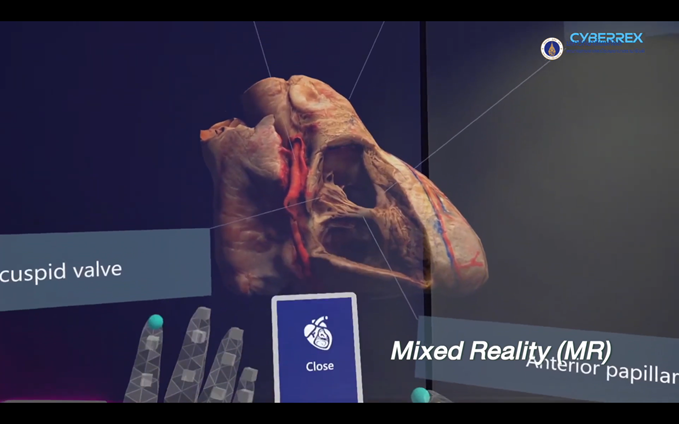Ramathibodi Hospital trials 6 GHz Wi-Fi for enhanced connectivity in healthcare
)
The first full-band 6 GHz Wi-Fi trial in Thailand demonstrated faster speeds and lower latency in VR-based medical training
In 2024, the Faculty of Medicine Ramathibodi Hospital (FMRH) – together with members of the Wi-Fi Alliance – conducted Thailand’s first-ever trial of full band 6 GHz Wi-Fi.
As of April 2025, Thailand has opened up only the bottom half of the 6 GHz Wi-Fi band for public use. To test the capabilities and impact of the full 6 GHz band, the Thai telecoms regulator, the National Broadcasting and Telecommunications Commission (NBTC) designated FMRH as the site for a sandbox trial of the technology. The trial was conducted in partnership with Wi-Fi Alliance and its member partners Hewlett Packard Enterprise, Intel, and Meta.
| About 6 GHz Wi-Fi / Wi-Fi 6E Wi-Fi networks today operate primarily on 2.4 GHz and 5 GHz frequency bands approved for unlicensed wireless use. In 2020, the US Federal Communications Commission opened up the larger 6 GHz band for unlicensed use, paving the way for Wi-Fi 6E technology with higher speeds, reduced congestion, and increased capacity. So far, some countries have followed US’ lead in opening up the full 6 GHz band (5925 – 7125 MHz, a total of 1,200 MHz), while others, such as the European Union, have chosen to open up only the bottom half of the band (5925 – 6425 MHz) for public use. Regulatory authorities are generally concerned about harmonising spectrum use – between Wi-Fi and other users of the same band, such as microwave links, satellites, and mobile networks (5G) – and ensuring interference is minimised. |
Over a period of seven months in 2024, full band 6 GHz Wi-Fi was utilised in FMRH’s classrooms, specifically within its Chakri Naruebodindra Medical Institute located in Samut Prakan province, south-east of Bangkok. Students and faculty members tested the connection speed and stability while interacting with high-resolution anatomy images via Virtual Reality (VR) headsets.
|
|
Leading the trial is Assistant Professor Sithakom Phusanti, M.D., Assistant Dean for Policy and Planning at FMRH. He noted that throughout the trial, 6 GHz Wi-Fi delivered clear network performance improvements over existing Wi-Fi infrastructure, crucial to supporting ever-higher data flow volumes in today’s healthcare environment. |
“If you look at the hospital today, we are more connected than ever. We have thousands of devices running at the same time, with doctors accessing imaging scans, researchers working with massive datasets, and students leveraging AR/VR for their training. Add to that the use of smartphones, tablets, and laptops across the hospital, and you’ve got a network that’s overloaded,” said Dr Phusanti.
“In the pilot trial, 6 GHz Wi-Fi showed much better speed and stability, with the greatest impact demonstrated during large group interactive training. In the past, students used to experience sudden disconnections or lag when they used VR headsets to interact with 3D anatomy models. Now, they get near-instant response time. We have received very good responses from the students and faculty.”

The team is currently preparing a report of the trial results, for the NTBC’s assessment of nationwide 6 GHz Wi-Fi expansion.
Exploring the use of full 6 GHz Wi-Fi in the hospital setting
For FMRH, the next step of the project would be to extend the trial to the hospital setting. Areas such as the emergency room and the ICU, where patients’ conditions need to be closely monitored in real-time, would benefit from enhanced connectivity, Dr Phusanti pointed out. This hospital trial must address several vital aspects of performance and security.
“There would be a lot more medical equipment in the hospital being used simultaneously, as compared to the medical classroom. So it’s very important to test the speed, reliability and stability of the network under such dense deployment,” he noted.
“We would also need to look at the compatibility of the devices, especially the older or legacy ones, with the new connectivity technology. At the same time, data security is also critical. With the tremendous increase in data uploaded and downloaded, the data security and privacy policies should be updated, including protocols around encryption, authentication and control, to protect medical records and research data.”
The team will also explore how 5G – which has already been implemented at FMRH – and Wi-Fi can be used together in an optimal manner. In general, Wi-Fi is well-suited for indoor, high-density usage, whereas 5G excels in outdoor, wide-area coverage. For FMRH, the goal is not to select one over another, but to leverage on the strengths of both to enhance connectivity and support the growing usage across the hospital and medical school, Dr Phusanti emphasised.
Connectivity as the cornerstone of digital healthcare
As healthcare accelerates its digital transformation, connectivity – characterised by high speed, stable connections with minimal lag – has become the fundamental building block.
“High speed, low latency connectivity (in healthcare facilities) is no longer optional – it is a necessity,” said Dr Phusanti.
“I think it’s very important for regulators to support connectivity initiatives, and it’s important to do so now. In the coming years, there will be a lot of AI-driven applications that will require connectivity to run. As technology advances year on year, we need to pay attention to the infrastructure layer, especially connectivity, to ensure we can leverage on the latest technologies in the field.”


 Assistant Professor Sithakom Phusanti
Assistant Professor Sithakom Phusanti